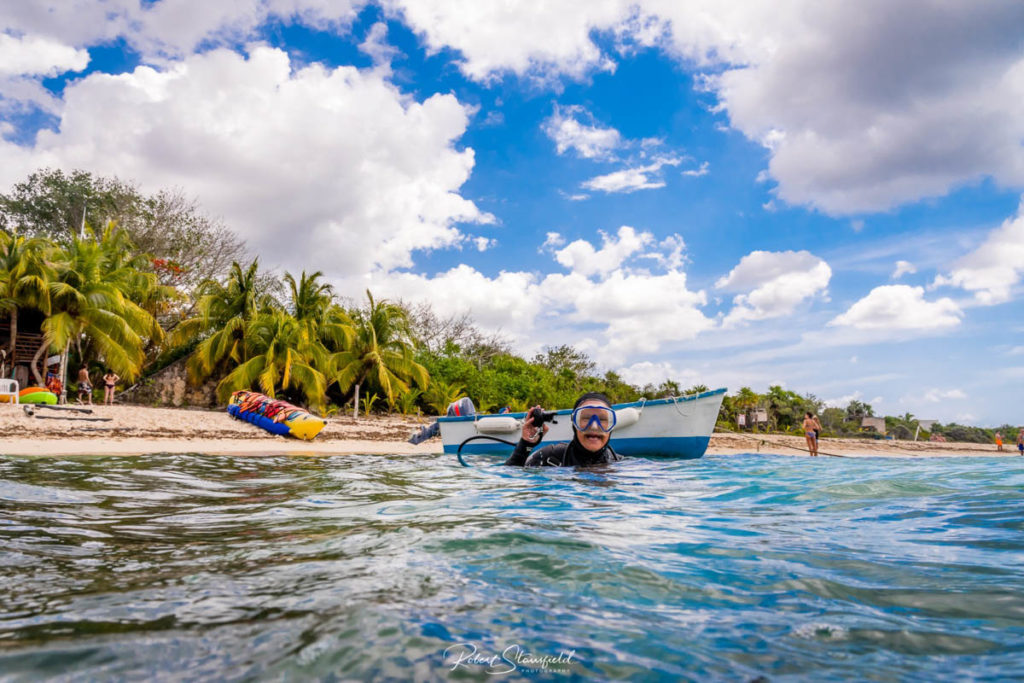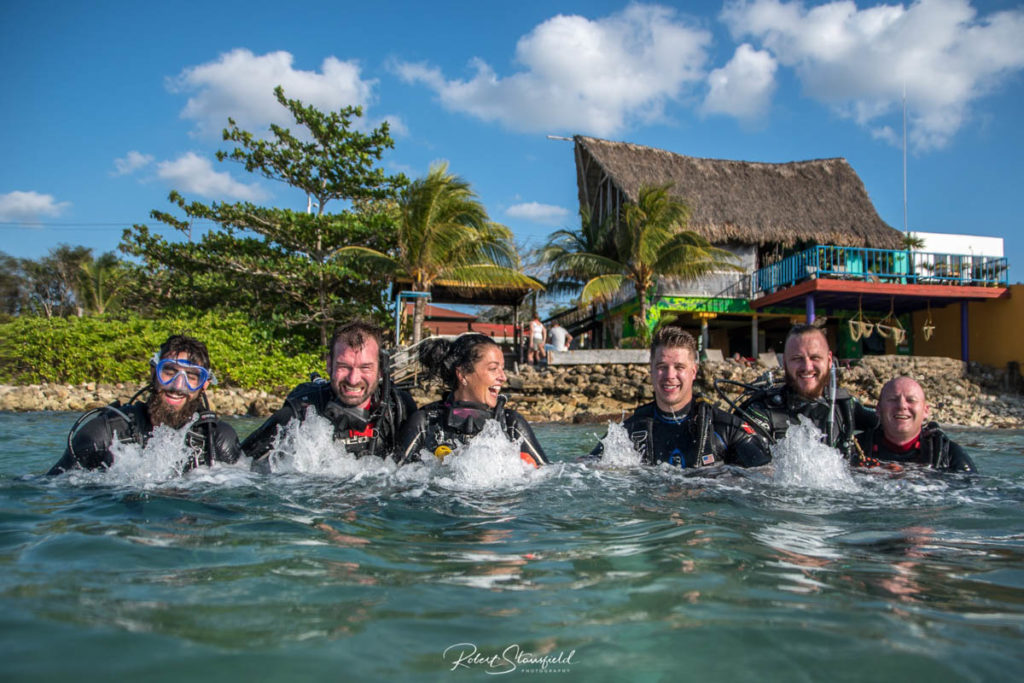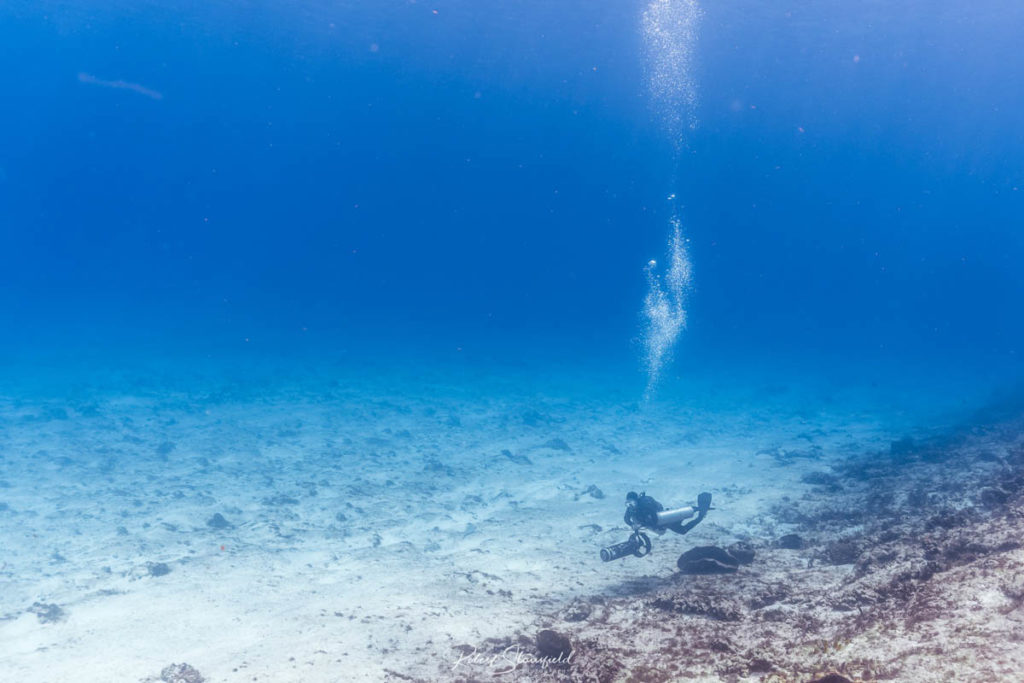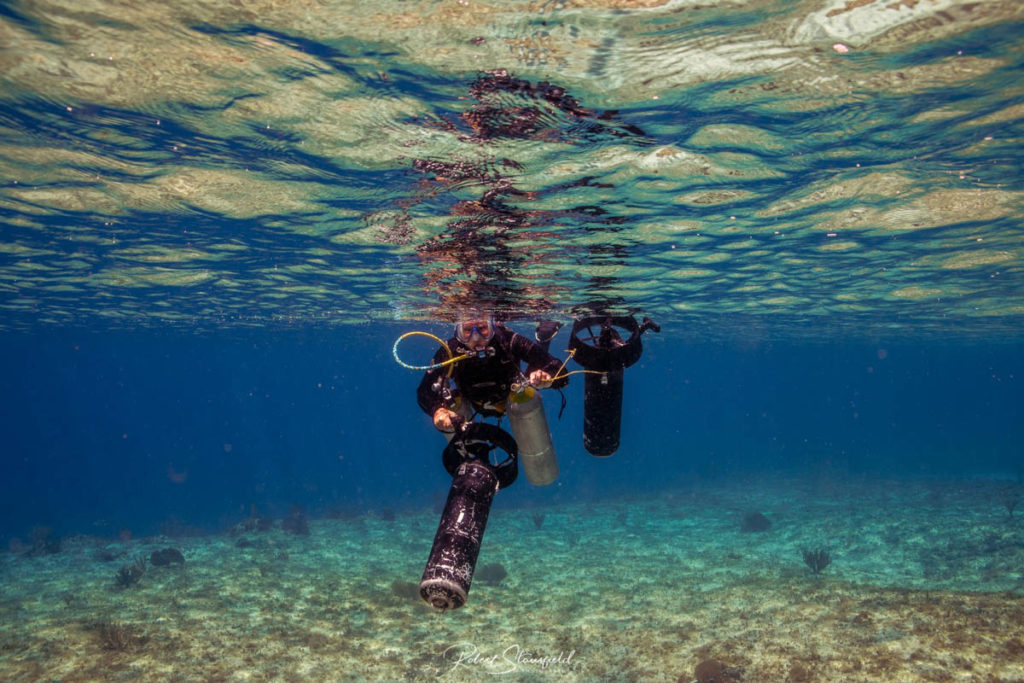When we go diving, our choice of site is often greatly influenced by the means we have available for reaching it. The reverse can also be said to be true, how we reach the site may be influenced by where it is. For certain kinds of diving, such as at inland sites and cave diving sites, the diving will almost always be “shore” based, in that we simply walk into the water once we reach the site. For ocean-based sites, especially those that are within a couple of hundred meters of shore, there may be a choice to be made between a shore entry or a boat entry. Sites more than a few hundred meters from shore and remote islands will almost always be reached by boat. Depending on how you reach your dive site, there are considerations that need to be taken into account. These range from your own personal comfort level with how you will reach the site to what logistical choices you may need to make.

I would wager that most peoples first open water dives were done from the shore. Shore diving is a great way to simplify the process of getting into the water, due to the fact that it cuts out the need for taking a boat to the site. For any diver, especially the less experienced, the added element of kitting up on a rocking boat can make the experience more stressful. In any areas which have the option of a beach entry, as many good diving destinations around the world do, shore entries are often simple to carry out. In some areas though, your first dives may still have been off a boat. I completed my PADI Open Water course in the Florida Keys, where much of the coastline is mangrove forest. As such, my first two open water dives were actually boat dives. This is less common in most locations. While shore entries are generally looked at as being simpler, there are definitely cases where they are more challenging, and a range of factors may make you reconsider whether it is a sensible entry choice.

Terrain is potentially the largest factor in whether attempting a shore entry is desirable. Even if there is easy access on foot to a bather, when encumbered with dive gear this can become a very different story. In areas such as the south-west of the UK and further afield in places like the Canary Islands, much of the coast is rocky cliffs or boulders with coves which allow access to the water. Reaching these coves can often be a daunting task. Some have good paths or winding roads leading down to them, while others may simply have a rough trail. Any coast which is primarily cliffs often share the same problem of it being a steep descent to the beach and a hard ascent back up to where you left your vehicle. You then might have the added challenge of the beaches being boulder rather than sandy, due to them being made up of rocks which have fallen from the surrounding cliffs. These can make for some interesting journeys across the tidal zone to the water if you don’t time your visit right. Add all these factors together and throw in a set of dive gear, and you have a high amount of faffing around to complete before you even get in the water. In hot climates this can be particularly hard. The risk of somebody getting hurt before you even reach the water is a real one. To avoid injury, it is often best to use some slightly different equipment. Rock boots are designed for shore diving, and have a much more substantial sole for crossing jagged terrain with weight on your back. Owning a drysuit with these integrated or a standalone pair of neoprene rock boots is essential for safer shore diving.
Building on from this is that while these shore entries may be suitable to one diver, they may be impossible for another. The less able bodied would have a very tough time or simply not be able to attempt some of the shore entries in rougher terrain. Even people who have full functionality need a good level of fitness and strength to handle shore entries in areas where the walk from the car park to the sea may be long, steep, or awkward. When diving with generally fitter divers, this may not be much of a consideration, but when diving with a broader range of fitness levels, it may be best to accommodate to the needs of the individual that will have the hardest time. When I first started UK diving, I was not particularly fit and decided to tag along on a club dive to Long Quarry Point near Babbacombe in Devon. It is one of these ideal secluded coves, but is a long steep walk from the car park above. We did this on a warm summer evening and decided to get into our dry suits at the car park rather than at the beach. By the time we were done lugging our kit down there, the guys I was diving with were looking at me as if I was about to spontaneously combust. I felt very faint and had to splash around in the water for a while to cool off before donning the rest of my kit. I suppose this is one of the downsides to diving somewhere that the air temperature can be drastically warmer than the water you will dive in. In more recent years, I have known club members who would struggle to walk more than a few meters while wearing their kit, let alone ascend 200m up a steep hill after an hour long dive. Fitness is a real potential limitation to shore diving, and one that should not be neglected if the entry may be a challenging one. Shore dives of this nature are often limited to single cylinder recreational diving, carrying multiple cylinders or a rebreather up and down a cliff for technical diving would be a reckless exertion before and after decompression diving.

Boat diving is often the preferred choice in many locations as it cuts out the need for lugging equipment across difficult terrain. You may still have to struggle with getting your gear to the boat, but once you are on board, it’s usually pretty hassle free until you reach the dive site. Of course, actually kitting up and getting into the water off a boat can be a bit more challenging, especially if there is swell or chop, but you are not faced with the same fitness challenge as the previously mentioned shore diving scenarios. For those that aren’t so fit, there is often even the option to remove your kit at the end of the dive and pass it up to the boat crew, allowing you to climb out of the water without the extra weight dragging you back. Some boats even have lifts installed which will remove a fully kitted diver from the water and up to deck level with no issues. For those that are technical divers, boats are a far better option due to the short distance one needs to move while wearing the especially heavy equipment compared with shore diving. It is very easy to injure oneself or someone else if you fell over wearing the often 50+ kilos of tech gear. The other major advantage to boat diving is that if a diver is struggling to get back to the boat for whatever reason, the boat is able to come to them to assist them (as long as they are easily visible to the skipper). In many areas such as on offshore reefs, boat diving is the only option, and in marine reserves there are often anchoring restrictions meaning your boat will likely try to follow you from the surface and locate you when you surface. This minimizes the time spent with your equipment on where you aren’t actually diving.
Boat diving does have some problems, notably that it is adversely affected by weather conditions on the surface. It is sometimes the case that while the conditions at depth are good, the surface conditions and top of the water column may not be ideal. This can cause issues ranging from simply being a bit uncomfortable on the boat ride out the site, to making entry, safety / decompression stops and exit difficult or dangerous. Sometimes if the weather is forecast to deteriorate over the duration of an upcoming dive, a skipper may decide to cancel it and head back to harbour. While it may be relatively flat when you enter, if high winds arrive while you are diving, you may surface to a very choppy scene. This can make exiting challenging, especially if winds are pushing the boat one way while currents are carrying divers in another. Boats having to reposition with their propellers while divers are in close proximity is never an ideal situation. Spending a long time on the surface or on deck in chop can have another unfortunate consequence, that being seasickness. I would say any diver that has spent significant time boat diving has felt sea sick or been sea sick at least once or twice. Luckily you can remedy this in many cases by simply taking some dive safe, over the counter medication on the morning you are due to boat dive and remembering simple tricks like watching the horizon while taking slow, deep breathes. Chop can also move equipment around on deck if it is not stowed properly, and even when it is, extreme chop may move it anyway. In most cases you won’t be out in these kinds of conditions, but the odd freak wave is possible in lighter chop. This can be quite alarming when a 23kg cylinder comes lose and careers across the deck towards an unsuspecting foot. Good skippers are usually aware of how their boat handles in a range of conditions and will let you know whether you need to be particularly aware of loose gear beginning to move.
Both shore and boat diving have their merits, and in many situations, it will simply be a case of whatever is the best way of reaching the site you are diving at. In the bulk of scenarios, boat diving is the preferred choice of many divers as it allows access to a much broader range of sites, and when conditions are ideal is an enjoyable experience being out on the boat itself. Shore diving might still be necessary to reach certain sites, and is often a good way to get some experience before heading out to deeper boat dives. The choice between the two is therefore quite situational, but it is important to bear in mind the extra measures you may need to take for one over the other. The scenarios mentioned here are by no means an exhaustive list, but they are often those that affect unprepared divers in the greatest capacity. Given time and experience, most divers will learn what they are capable of and happy with when it comes to reaching their dive site.







